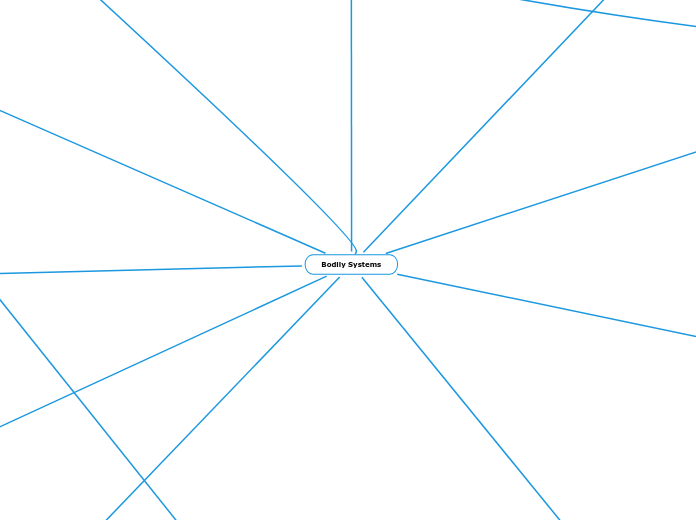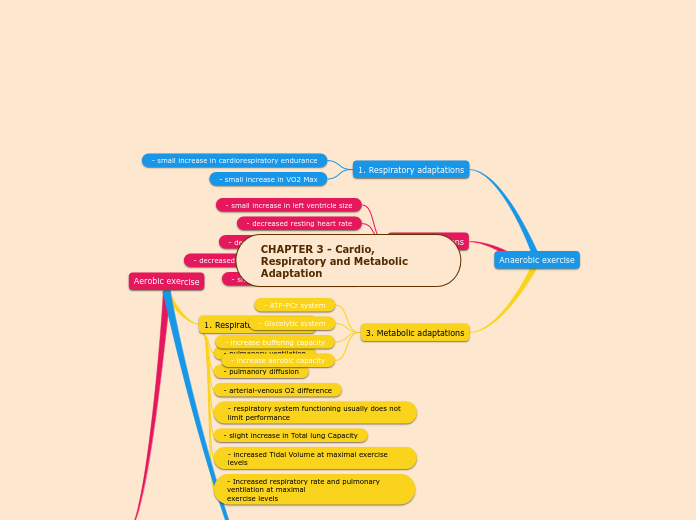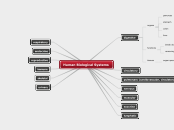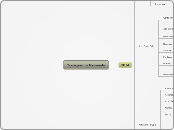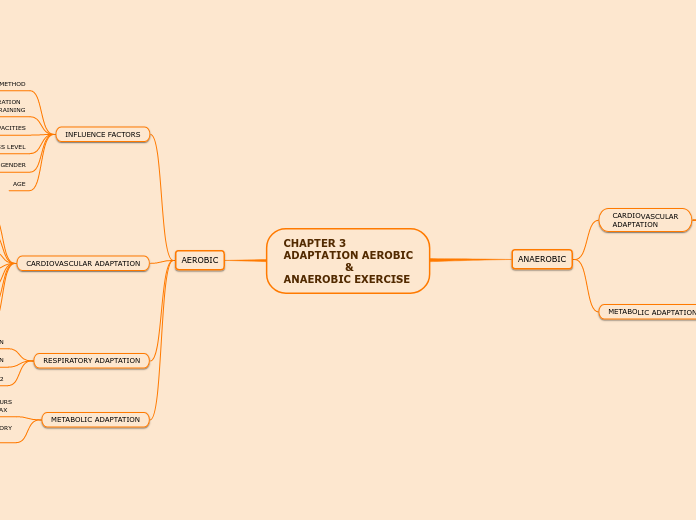Signaling cells
leptomeninges
Cerebrospinal Fluid
Pia Matter
Arachnoid
The gallbladder
Inner Surface
Columnar Cells
Brush Border
Microvilli
7-10 Centimeters in length
Three parts
The Neck
Cystic duct
The Body
The surface of the lower Liver
The Fundus
Rounded base
Bodily Systems
Integumentary System
Vitamin D
Vitiligo
Skin grafting
Psoralen and Light therapy
Inflammation controlling drugs
Lack of melanin within skin cells
Skin cancer
Photodynamic therapy
Chemotherapy
Radiation therapy
ultraviolet Radiaton
melanoma
squamous-cell skin cancer
basal-cell skin cancer
Abnormal cells
The body
exocrine glands
Skin
The hypodermis
Bodily temperature
Insulator
fat
The dermis
Muscular Tissue
Sensory nerve endings
hair roots
Follicles
Glands
Vessels
Connective tissue
The reticular layers
The Papillary
The epidermis
keratinocyte
stem cells in the basal layer that develop into the corneum
stratified squamous epithelial cells
stratum basale
stratum spinosum
stratum granulosum
Stratum Corneum
Nerve endings
Melanocytes
An initial barrier
External Environment
Basement membrane
1-5-2.0m^2
Nails
Hair
Skeletal System
Paget’s Disease
Vitamin D supplements
Calcium supplements
Abnormally large ormisshapen bones
Osteoporosis
bisphosphonates
Reduced minearal bone density
Organs
Cytoskeletan
Cellular motion
Cells
Hydroskeletan
Semi-rigid structure
Liquid
Endoskeletan
mesodermal
Internal support structure
Exoskeleton
Soft tissues and organs of the body
External
Individual or joined bones
Hard tissue
ancellous bone
cortical bone
osteocytes
Osteoblasts
Redblood cells
Move
Support
Cartilage
Muscles
Muscle
Ligaments
Nucleas
Respiratory System
Asthma
prescription of corticosteroids
bronchodilator inhalers
STeroids
Sticky secretions
Pneumonia
Resting
Viruses
Bacteria
Streptococcus pneumoniae
Respiratory tract
Upper respiratory tract
Upper Larynx
Pharynx
Vocalization
laryngopharynx
pharyngeal plexus
stratified squamous epithelium
Passageway
Food, air
posterior pharyngeal wall
postcricoid area
pyriform sinus
Pathway Divergences
Digestive Pathway
Respiratory pathway
oropharynx
epiglottis
Aspiration
palatine tonsi
Lateral wall
tonsillar pillars
tonsillar fossa
tonsil
anteriorly
Mouth
The nasopharynx
Auditory tube
respiratory epithelium
The base of the skull
The pharynx
Sinuses
sphenoidal sinuses
ethmoidal sinuses
Frontal sinuses
maxillary sinuses
The eyes
Nasal cavitie
Nasal passage
two cavities
Olfactory segment
Respiratory segment
Continuations of the nostrils
nasal septum
Nose
Lower respiratory tract
"Respiratory tree"
Alveoli
Lung aveoli
alveolar ducts
respiratory bronchioles
alveolar sacs
Acini
lung parenchyma
Gas exchange occurs
Bronchioles
bronchial airways
Bronchi
left main bronchus
right main bronchus
Lungs
Trachea
Two primary Bronchi
Larynx
Air
cartilaginous tube
Lower Larynx
Sound and Pitch
Breathing
Renal System
Bladder cancer
urinary diversion
A new pathway for urine to leave the body
cystectomy
All or part of the bladder
transurethral resection of bladder tumour
The tumor within the bladder, through access from the Urethra
Bladder cells uncontrollably grow into a tumor
Kidney Stones
Parathyroid gland surgery
Hyperparathyroidism
Pain killers
Deposits of calcium within kidneys
Nephritis
Antibiotics
The glomerulus
HIV
Hepatitis
Blood ph
Electrolytes
Blood pressure
Waste
The urethra
Expels urine received from the bladder
The urinary bladder
Urinary meatus
The bladder
vesical arteries
inferior vesical artery
superior vesical artery
vesical veins
Openings
Neck
Apex
Fundus
Ureters
Peristalsis
internal iliac arteries
common iliac arteries
renal arteries
The pelvis
20-30 Centimeters in length
urothelial cells
Tubes
Smooth muscle fibers
Urine
Bladder
the removal of toxins
Renal arteries
Dorsal body wall
waste
Nephrons
Structional unit
From a process of blood filtration
Glomerulus
Small blood vessels
Nervous System
Decrease in cognitive abilities
practicing proper hygiene and maintaining a proper sleep schedule
Decreasing alcohol consuption
strokes
Reduced blood flow
Lewy bodies
microscopic clumps
protein
Parkinson's disease, dementia
Abnormal clumps of beta-amyloid protein
Loss of coordination
Physical Therapy
Cerebellum
Surgery, removing parts of the brain that cause seizures
Ketogenic Diets
Anti-Epileptic Drugs
Bursts of abnormal signals
Regular signals
internal Ciculation
multicellular organisms
Neurons
Axons
Neurotransmitters
Synapses
electrochemical waves
Peripheral Nervous System
Enteric nervous sytem
gastrointestinal system
Autonomic nervous system
Parasympathetic part
Organisms are in a state of rest
Sympathetic part
Cases of emergencies
Energy
Somatic nervous system
Mediate voluntary movements
Nerves
Central Nervous System
The spinal cord
Signals
Brain and Peripheral Nerves
The brain
Cerebrum
Voluntary actions
Muscular System
Muscle cramps
Involuntary contraptions of certain muscles
Polymyositis
Physical therapy
Corticosteroids
Relieves symptoms
Weakness in muscle
cerebral palsy
diazepam
Relax muscles
Injections of onabotulinumtoxinA
loss of motor function
brain damage
Autonomous muscles
Involuntarily
The cardiac muscle
Cardiac muscles
Blood
Electrical stimulation
action potential
Calcium
sarcoplasmic reticulum
The sinus node
Involuntary movement
Muscle fibers
Smooth muscles
Hollow organs
multiunit smooth muscle
Single unit
non-striated muscle
Skeletal muscles
Tension
of cells
Bones
Tendons
639
Coordinated contractions
myocytes
myofibrils
sarcomeres
myosin
Actins
Striated muscle
AIDS
Cure
antiretroviral therapy
Allergies
Immunotherapy
Purified allergen extracts
Medication
Abnormal sensitivity to what are normal antigens
Chemical substances
Defense
Subtopic
Chemical barrier
Adaptive immune system
A lagged response
jawed vertebrates
Exposure that leads to immunological memory
Tailored responses
Stimuli
Molecules it has previously seen
Innate immune system
An immediate response
nearly all forms of life
No immunological memory
Cell lineage
Structure
Microbes are identified
pattern recognition receptors
All animals
Preconfigured responses
groups of situations and stimuli
Pathogens
Biological processes
Organism
Diesease
Endocrine System
Thyroid diesease
Diabetes
Type 2 Diabetes
Weight changes
Type 1 Diabetes
Dietary changes
Insulin
diabetic ketoacidosis
high blood pressure
Intercellular Vacuoles
Organs with secondary endocrine functions
The gonads
The liver
Kidneys
Bone
Endocrine glands
The parathyroid gland
parathyroid hormone
Low blood calcium
testes
Androgens
the hypothalamus
Ovaries
amino acid
Organic compounds
steroids
Biologically active compounds
eicosanoids
Signaling molecules
The pancreas
The pituitary gland
Physiological Processes
The Pineal gland
Melatonin
Hormones
Ducts
Vascular
The adrenal glands
Adrenaline
The thyroid gland
calcitonin
thyroxine
triiodothyronine
Chemical based messaging system
Feedback loops
Hromones
Internal glands
Digestive System
Sensory receptors are stimulated
Issues
Celiac Diesease
Initiating a gluten free diet
Depression
Seizures
Vomiting
Blotation
Diarrhea
Immune system
Gluten
Gallstones
Refined Carbohydrates
Increasing fiber intake
Abdomen Pain
An excess of cholesteral
An excess of waste
Hard deposits
Gallbladder
Gastroesophageal Reflux Disease (GERD)
Common
Stomach Acid
Esophagus
The Pancreas
Enzymes
The Liver
Bile
Solid Organ
The Gastrointestinal Tract
Materials
Ileocecal Valve
Salts and Water
The Large Intestine
The Small Intestine
Three Main regions
Ileum
Vitamin B12
3.0 Meters long
Jejunum
Villi
2.5 Meters long
Midsection
Duodenum
Brunners glands
Alkaline Secretions
Head of the Pancreas
23 Centimeters in Length
The Stomach
The Esophogus
Food and Fluids
Muscle Contractions
Gravity
Mucous Membranes
The throat
Stomach
The Mouth
Salivy
Food
Intestinal Phase
Chyme
Stretching of the duodenum
Gastric Function
Vagal Nerve
Gastric Phase
The stomach
Gastrin
Histamine
Acetylcholine
2/3
Cephalic Phase
Gastric Secretions
The Cephalic phase
Multiple sensory stimuli
Vagus Nerve
Gastric Secretion
Circulatory System/Cardiovascular System
Myocardial infarction
Medications
Anticoagulant
Stent procedures
Arteries
Bypass surgery
New passage-ways for blood
A blockade within blood vessels leading to the heart
Venous thromboembolism
Anticoagulants
Blood clots
Stroke
Blood clotting within veins
High blood pressure
Reduction of sodium intake
Weight loss procedures
Extreme pressure exerted when blood is pumped
Pulmonary circulation
Ventricle of the heart
Left atrium
deoxygenated blood
Right ventricles
Systematic circulation
microcirculation
macrocirculation
Oxygenated blood
Rest of the body
Lymph vessels
The lymph
Blood vessels
The heart
The sinoatrial node
Right atria
Left atria
Right ventricle
Left ventricle
Lymphatic system
Lymph
Recycled excess blood plasma
interstitial fluid
To circulate
Blood cells
Platelets
Hemostasis
Cell nucleus
Clumping where injury exists
Blodd clots
~7% of a persons body weight
White blood cells
Monocyte
Lymphocyte
Basophil
Eosinophil
Neutrophil
Nuclei
Multipotent cells
Red blood cells
Cyctoplasm
hemoglobin
red colour
Plasma
55%
Blood volume
Proteins
Body
Whole blood
Suspension
In fighting diesease
Carbon dioxide
Oxygen
Nutrients
